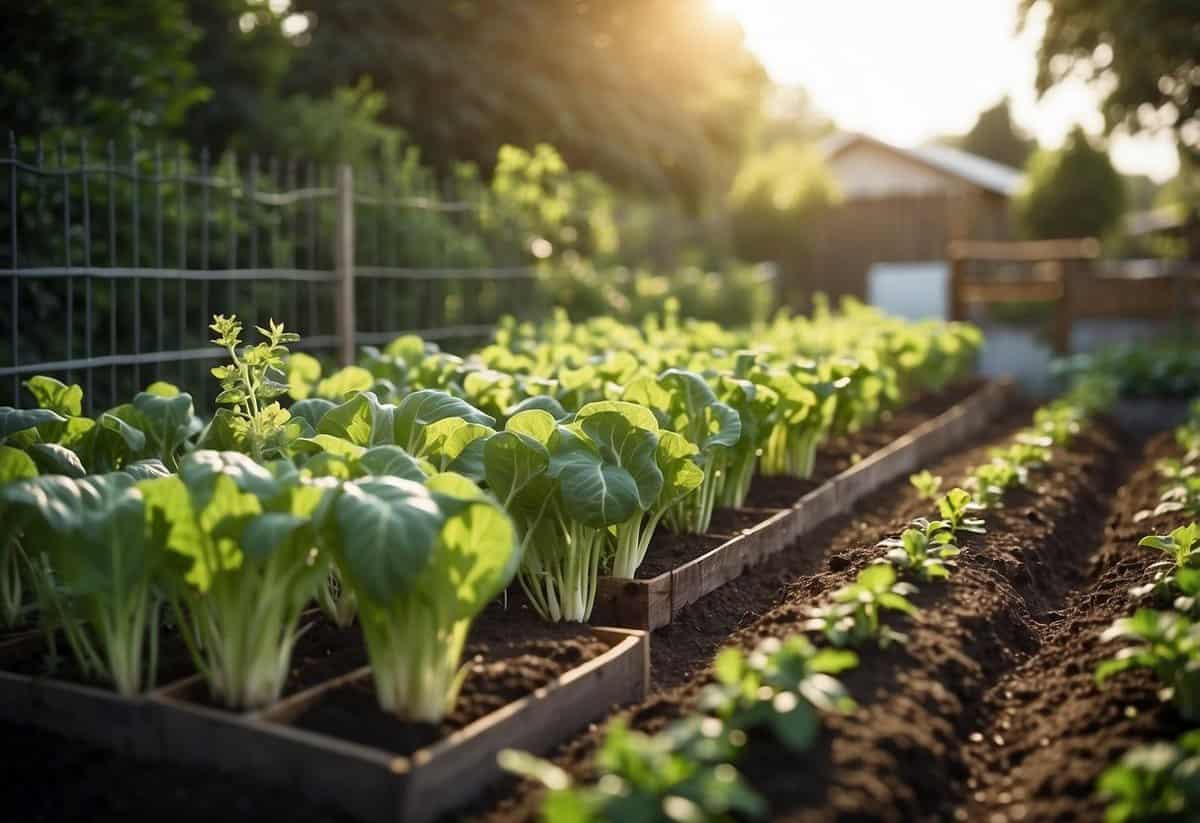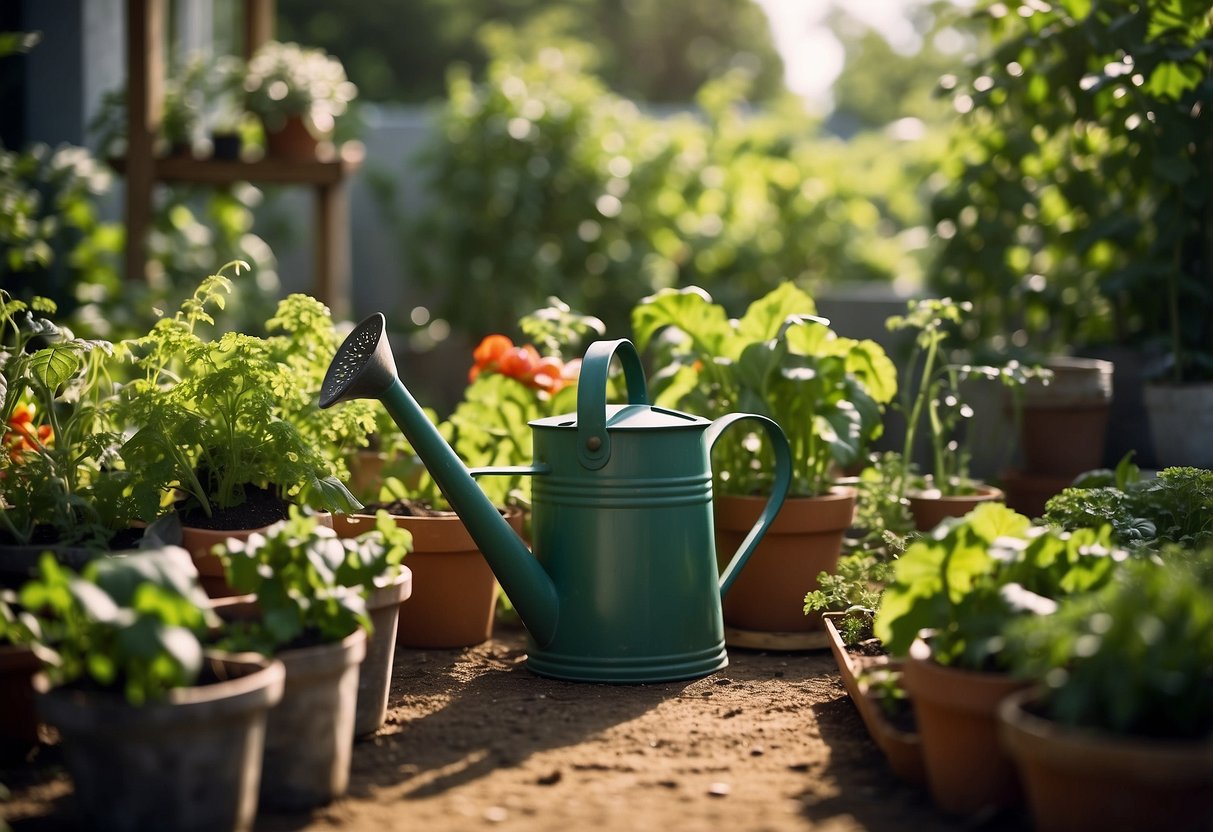Beginner Vegetable Garden Tips: Simple Steps to Start Growing Your Own Veggies
Starting a vegetable garden can be an exciting and rewarding hobby. Whether you have a big backyard or a small patio, growing your own vegetables provides fresh produce and a sense of accomplishment. It’s easier than you think to start your own garden and enjoy homegrown veggies!

You’ll find that with a bit of planning and some basic tools, anyone can create a thriving garden. With helpful tips and a little patience, you’ll be harvesting delicious vegetables in no time. Plus, gardening is a great way to get outside and enjoy nature.
Choosing the Right Location

Picking the right spot for your vegetable garden is key. Focus on sunlight and soil quality for the best growth.
Sunlight Requirements
Most vegetables need a lot of sunlight. Aim for a location that gets 6 to 8 hours of direct sunlight each day, especially for crops like tomatoes, peppers, and cucumbers. A sunny spot helps plants grow strong and healthy.
Leafy greens, such as lettuce and spinach, can grow well with less light, but still need at least 4 hours of sun. Check for any tall trees or structures that might block the sun.
Tip: Observe your yard throughout the day to see where the sunniest spots are. This helps ensure your garden gets the best exposure.
Soil Quality
Good soil is the foundation of a successful garden. Your soil should be well-draining and rich in nutrients. Poor soil can stunt growth and lead to unhealthy plants.
Before planting, test your soil. Kits are available at garden centers. Ideally, your soil should be loamy with a pH between 6.0 and 7.0. Add compost or well-rotted manure to improve soil texture and fertility.
Consider raised beds if your natural soil is poor. These allow you to control the soil quality more effectively.
Tip: Mulch helps retain soil moisture and reduce weeds. Spread a layer around your plants after they start growing.
Planting Basics

When starting a vegetable garden, it’s important to choose the right seeds and planting methods. Doing this will help your plants grow better and be more productive.
Seed Selection
Choosing the right seeds is essential. Look for seeds that are recommended for your region’s climate. Many seed packets have this information. Some easy vegetables to start with are tomatoes, lettuce, and radishes.
Check if the seeds are heirloom or hybrid. Heirloom seeds often produce tastier vegetables, while hybrids are bred for disease resistance. Reading seed packet labels gives you vital details like planting depth, spacing, and sunlight needs.
Buying seeds from reputable suppliers ensures high-quality seeds. Fresh seeds have higher germination rates, so avoid using old seeds. If you’re new to gardening, starting with pre-potted plants can be an easier option.
Planting Techniques
Proper planting techniques are crucial for garden success. For direct sowing, prepare the soil by removing weeds and adding compost. This improves soil fertility. Follow the recommended planting depth on the seed packet; planting too deep or too shallow can affect germination.
When transplanting seedlings, dig holes that are slightly bigger than the root ball. Gently place the plant and cover the roots with soil, pressing lightly to eliminate air pockets. Water thoroughly after planting to help the roots settle.
Consider planting in raised beds or containers if you have poor soil. Raised beds provide better drainage and can be filled with high-quality soil. Container gardens require specific soil depths depending on the vegetable, like four to five inches for herbs.
Caring for Your Garden

Taking good care of your vegetable garden means paying attention to watering and fertilizing. Proper care helps your plants grow healthy and productive.
Watering Guidelines
Watering your garden correctly is essential. You should water your plants in the morning. This helps the soil soak up the water before it gets too hot and dries out.
Make sure to water deeply. This means you should focus on soaking the soil to encourage deep root growth. It’s usually better to water less often but more thoroughly. About one inch of water per week is a good measure, but this can change based on your local weather.
Using mulch helps your soil retain moisture. It also reduces weed growth, which can compete with your plants for water.
Fertilizing Tips
Fertilizing your vegetable garden provides the nutrients plants need. Start with a soil test to determine what nutrients your soil might be missing. This helps you choose the right type of fertilizer.
Organic options like compost or fish emulsion are good choices. Compost adds beneficial organisms to the soil, improving health over time.
Follow the instructions on store-bought fertilizers carefully. Over-fertilizing can harm your plants. Typically, you should fertilize once every 4-6 weeks during the growing season. This gives your plants a steady supply of nutrients.
Apply fertilizer to the base of your plants, avoiding direct contact with leaves to prevent burning.







